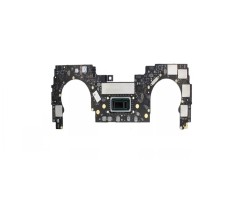A Simple Handbook for Fastening Nuts and Bolts
Nuts and bolts are fundamental components in construction, home improvement, and industrial applications. Understanding the right fastening techniques ensures structural integrity
Nuts and bolts are fundamental components in construction, home improvement, and industrial applications. Understanding the right fastening techniques ensures structural integrity, safety, and durability. Whether you’re assembling furniture, securing structural beams, or working on DIY projects, this guide provides essential knowledge on fastening nuts and bolts effectively.
Understanding Nuts and Bolts
What Are Nuts and Bolts?
A bolt is a threaded fastener designed to be used with a nut to join two or more components together. The nut, which has an internal thread, works by threading onto the bolt, creating a secure and adjustable connection.
Common Types of Bolts
Hex Bolts: Most commonly used in construction and machinery due to their six-sided head for easy wrench application.
Carriage Bolts: Feature a rounded head and square neck, typically used in wood applications.
Lag Bolts: Heavy-duty fasteners used for securing wood and masonry.
Machine Bolts: Designed for precision applications, often used with pre-threaded holes.
Common Types of Nuts
Hex Nuts: The most standard type, providing a firm grip.
Lock Nuts: Designed with a nylon insert or special shape to prevent loosening.
Wing Nuts: Feature wings for hand tightening and loosening without tools.
Cap Nuts: Provide a finished appearance while protecting the bolt’s exposed end.
Choosing the Right Nut and Bolt
Material Considerations
Steel: Standard for general applications; available in grades such as Grade 2, Grade 5, and Grade 8, each with varying strength levels.
Stainless Steel: Corrosion-resistant, ideal for outdoor and marine environments.
Brass and Bronze: Resistant to corrosion and often used in electrical and decorative applications.
Size and Thread Matching
Ensure the nut and bolt threads match in size and type (coarse or fine thread).
Reference standard measurements such as Metric (M6, M8) or Imperial (1/4", 3/8").
Use a thread gauge for precision in selecting compatible components.
How to Properly Fasten Nuts and Bolts
Step 1: Selecting the Right Tools
Wrenches: Adjustable, socket, or combination wrenches provide better grip and torque.
Torque Wrench: Ensures precise tightening to avoid over-tightening or under-tightening.
Screwdrivers: Required for bolts with slotted or Phillips heads.
Step 2: Aligning and Inserting the Bolt
1. Position the bolt through the pre-drilled hole in the materials to be joined.
2. Align the nut onto the threaded end of the bolt.
Step 3: Hand-Tightening
Begin by hand-threading the nut onto the bolt to ensure proper engagement without cross-threading.
Rotate clockwise until resistance is met.
Step 4: Tightening with Tools
Use a wrench to tighten the nut while holding the bolt head stationary with another wrench or tool.
Follow torque specifications for critical applications to avoid excessive force that may damage the fasteners or material.
Step 5: Using Locking Mechanisms (If Necessary)
Lock Washers: Help prevent loosening due to vibrations.
Thread Locking Adhesive: Provides additional security for high-stress applications.
Double Nuts: A secondary nut can be added for extra security in heavy-duty applications.
Avoiding Common Mistakes
Over-Tightening
Can lead to bolt failure or damage to the material.
Always refer to recommended torque values.
Under-Tightening
May result in loose connections that compromise safety and stability.
Using Mismatched Components
Ensure bolts and nuts are from the same material and thread type to prevent stripping and loosening over time.
Maintenance and Inspection
Regularly check for loosened fasteners in structures exposed to vibration or movement.
Replace damaged or corroded nuts and bolts promptly.
Lubricate threaded fasteners in high-friction environments to prevent seizing.
Conclusion
Fastening nuts and bolts correctly is essential for ensuring secure and long-lasting connections in home improvement and building applications. By selecting the right components, using proper techniques, and following best practices, professionals and DIY enthusiasts can achieve optimal results. Investing in quality fasteners and the right tools further enhances reliability and safety in any project.
By following this guide, you can master the basics of nuts and bolts fastening - baut & mur, ensuring that your projects remain structurally sound and durable over time.
What's Your Reaction?





















